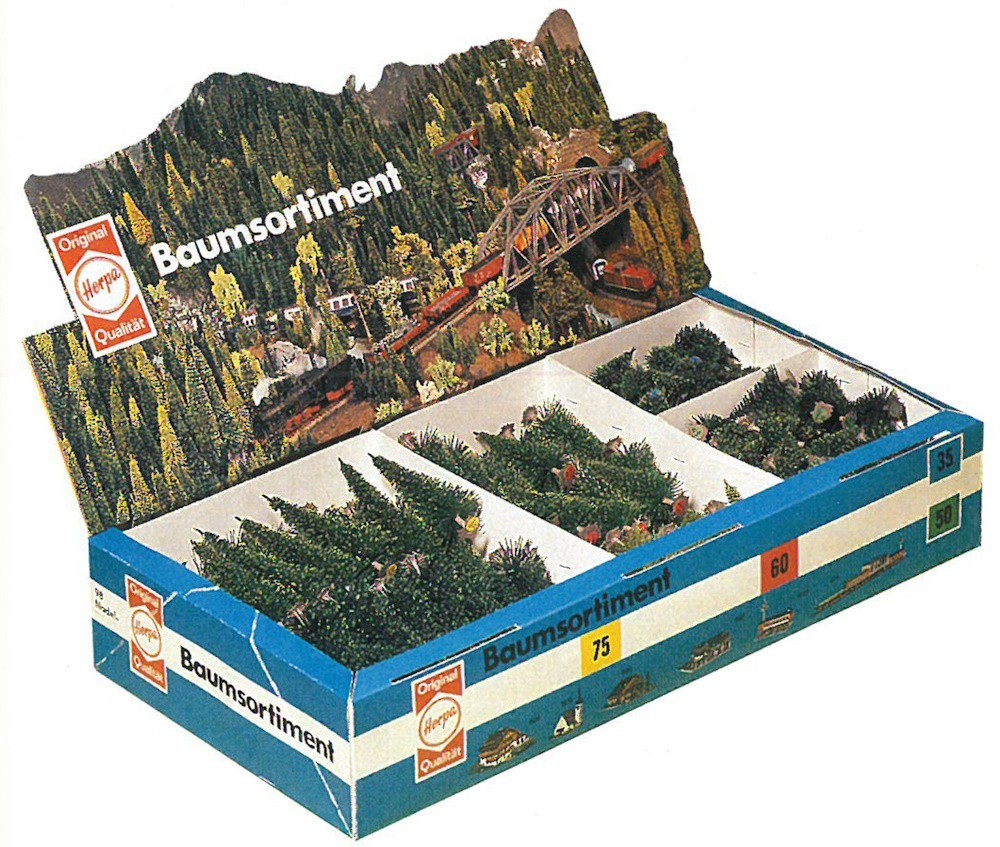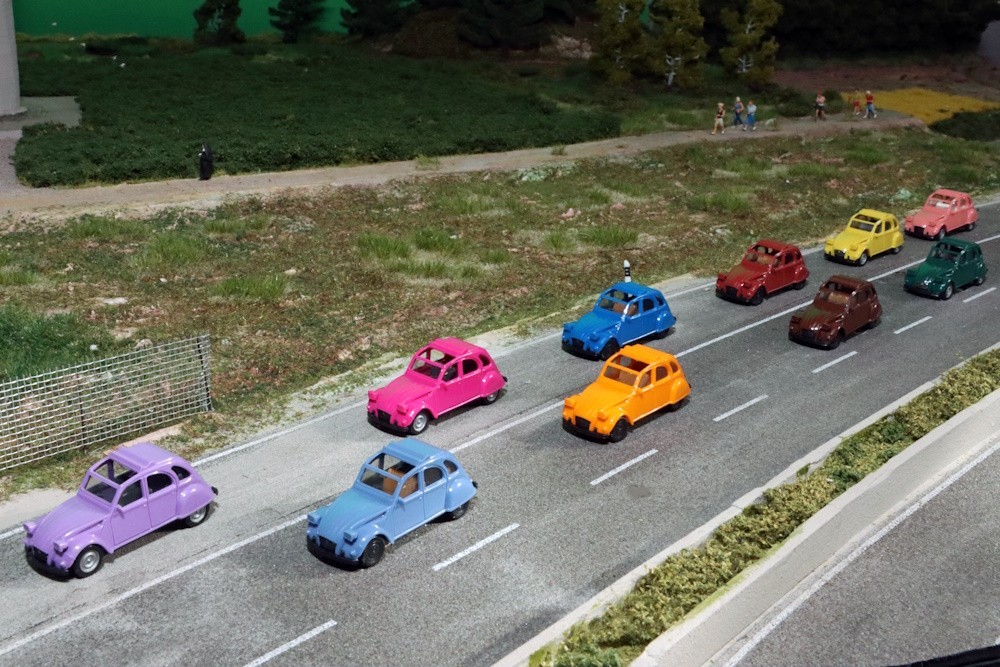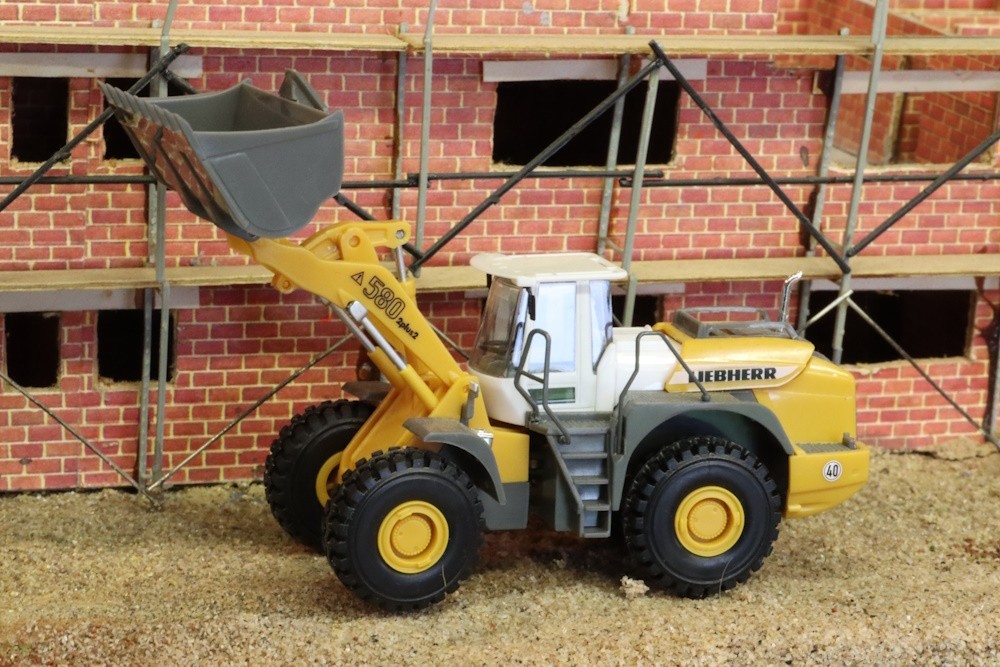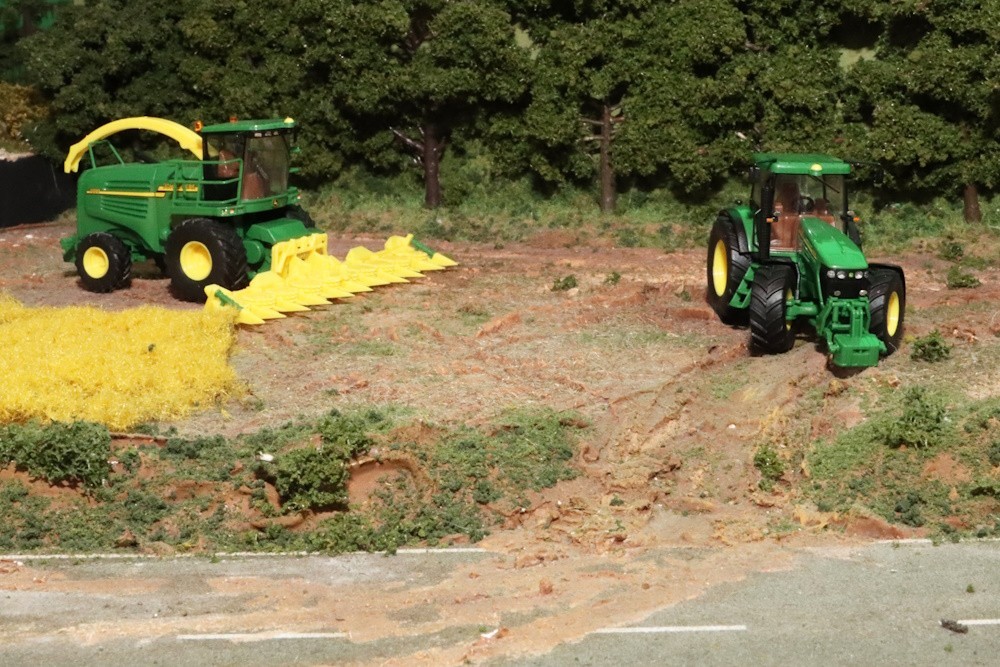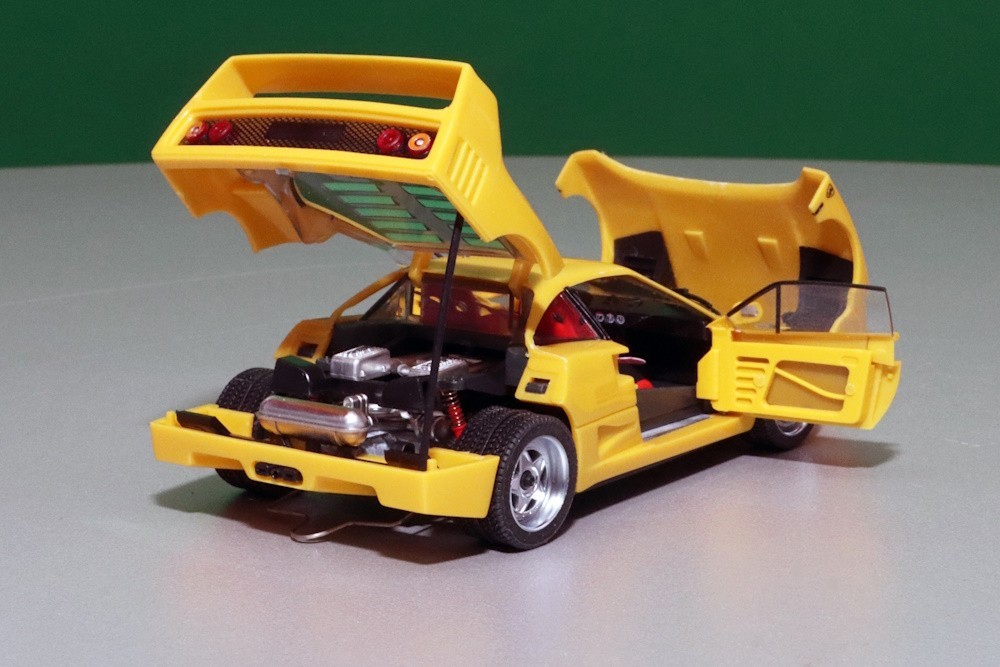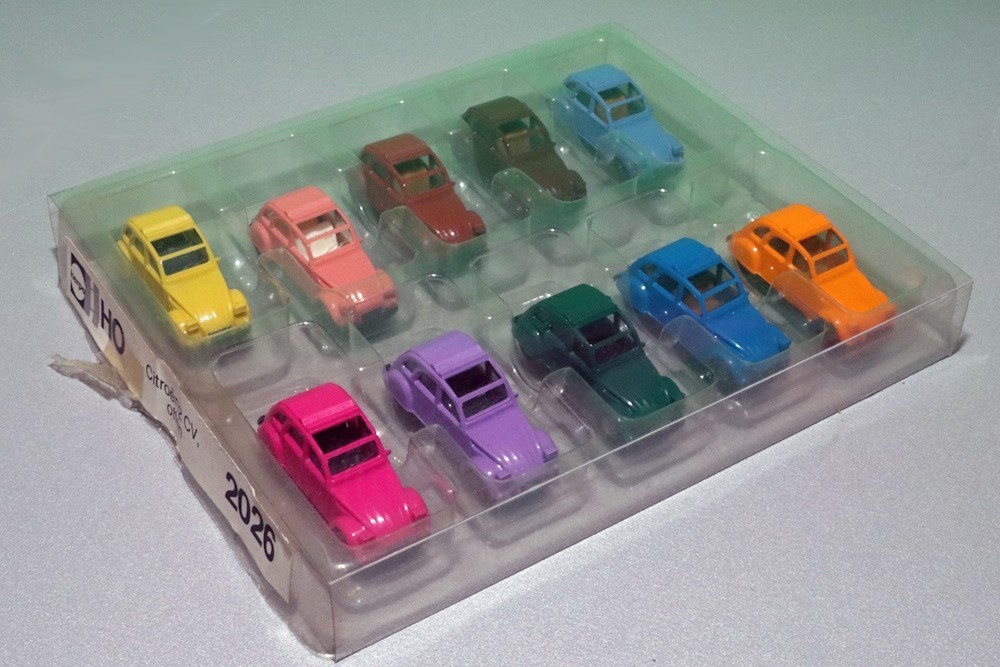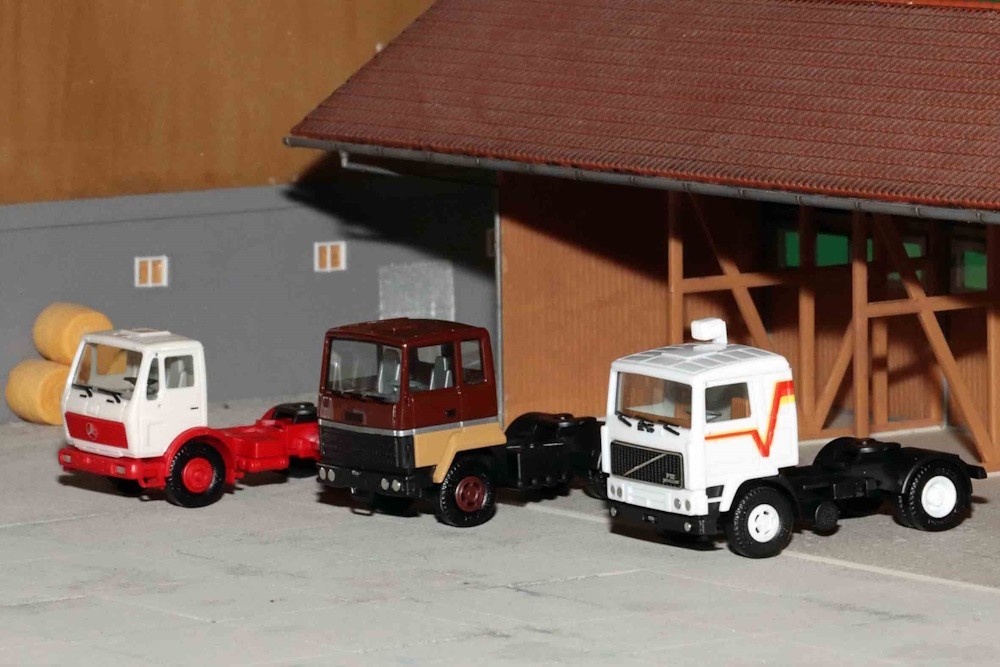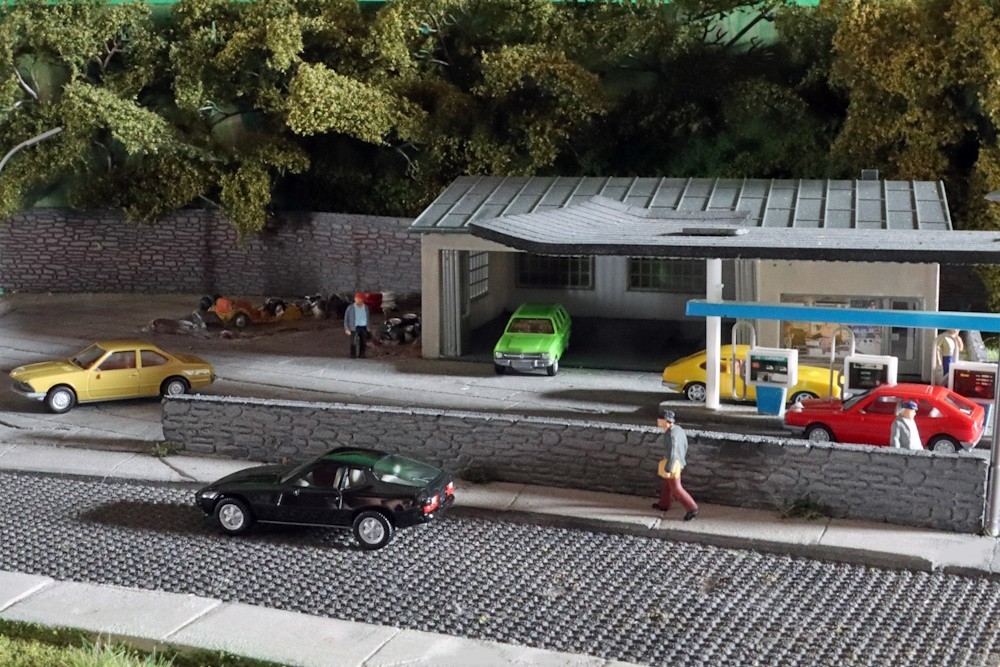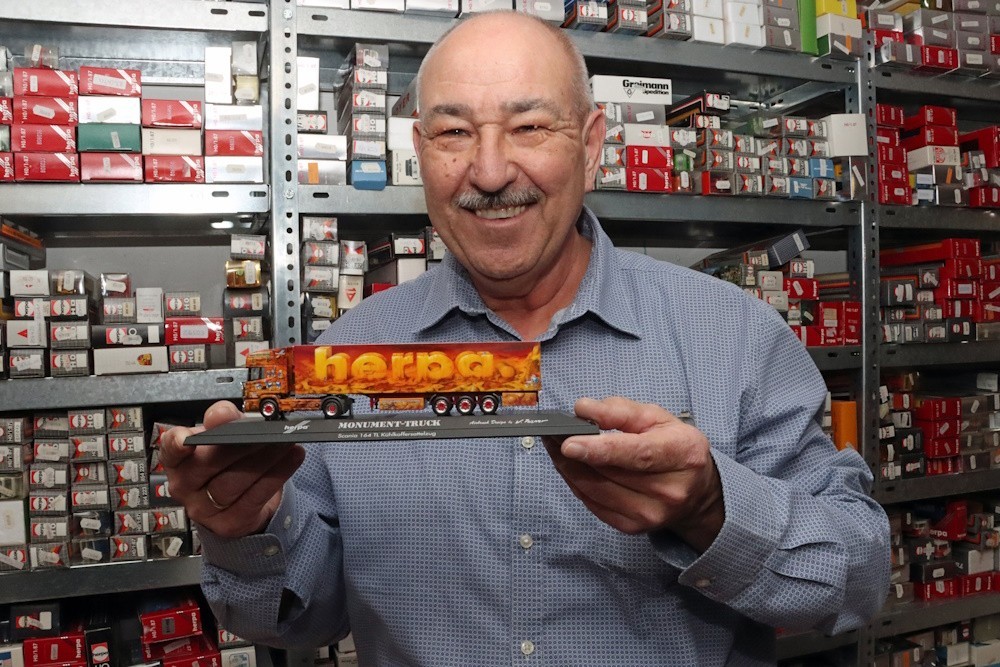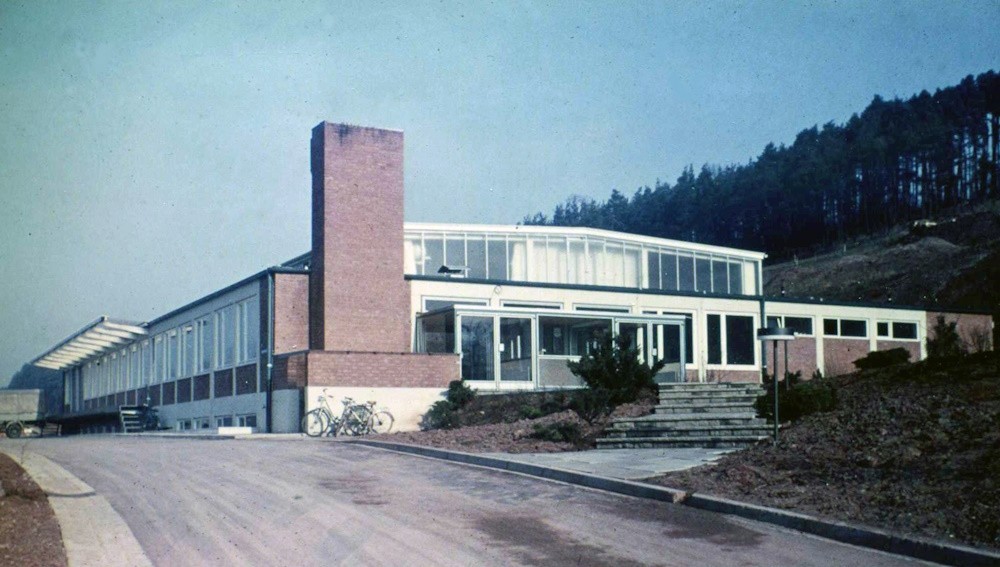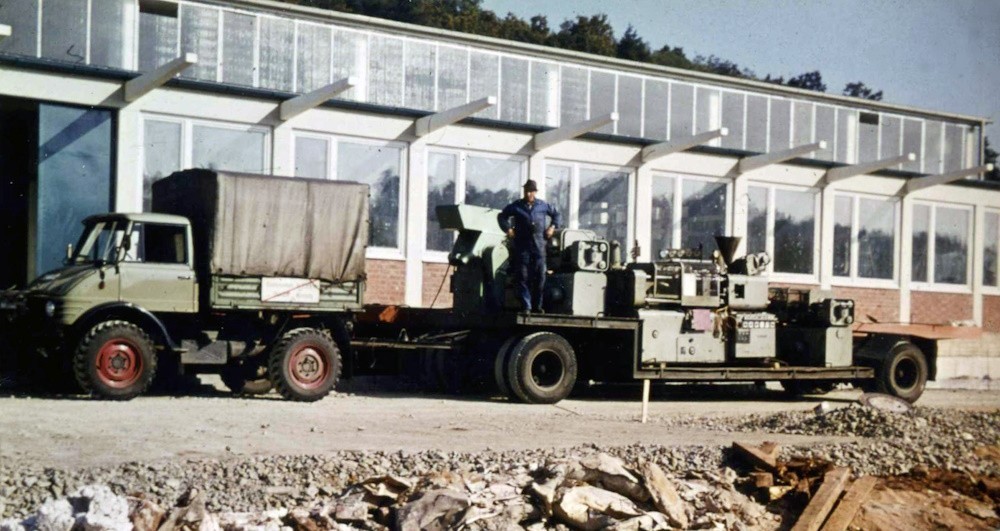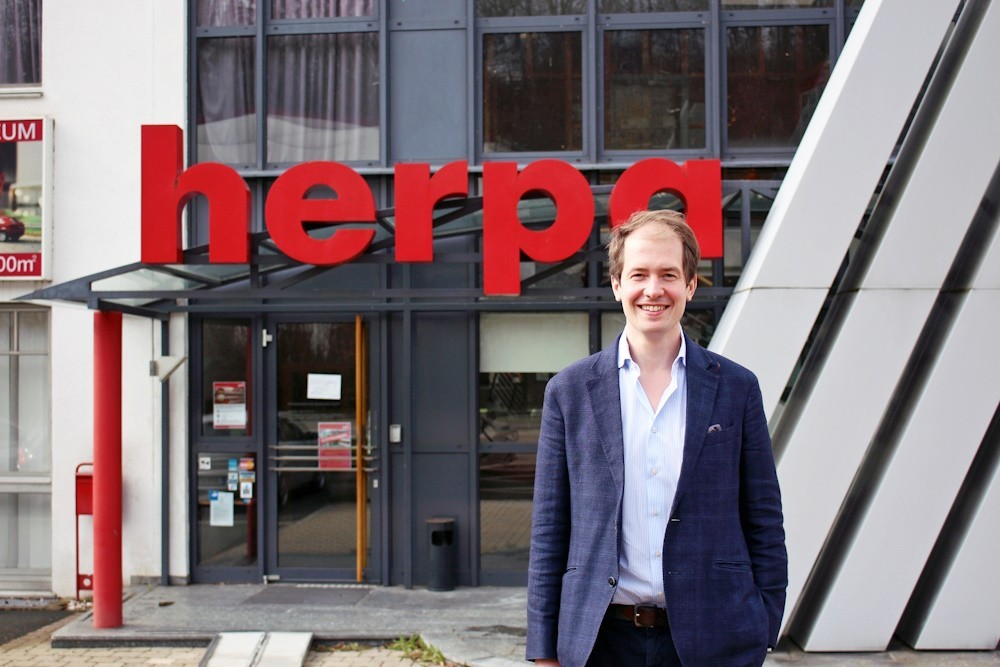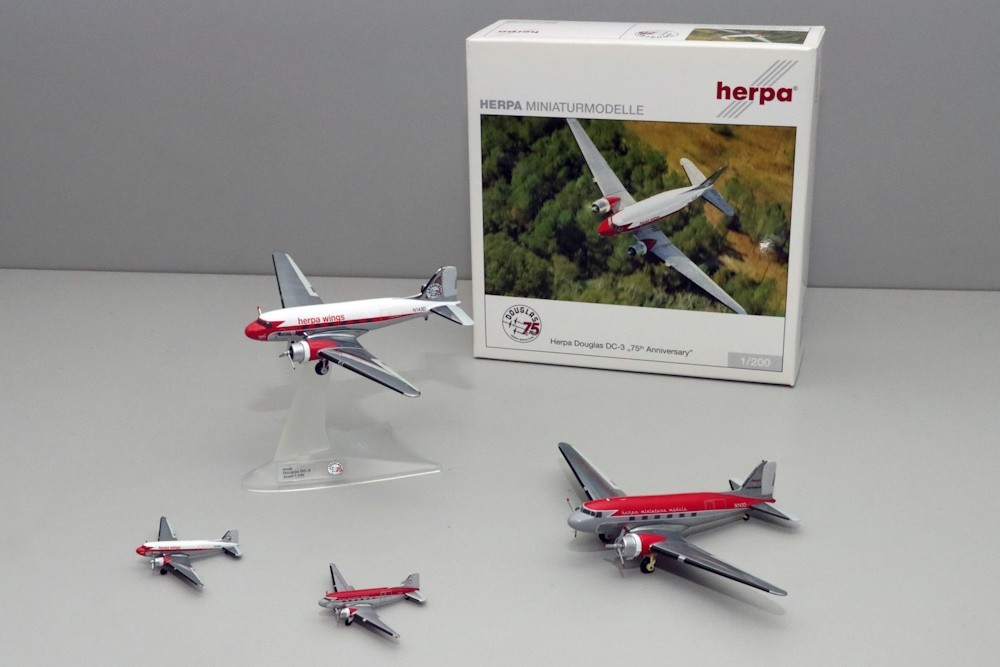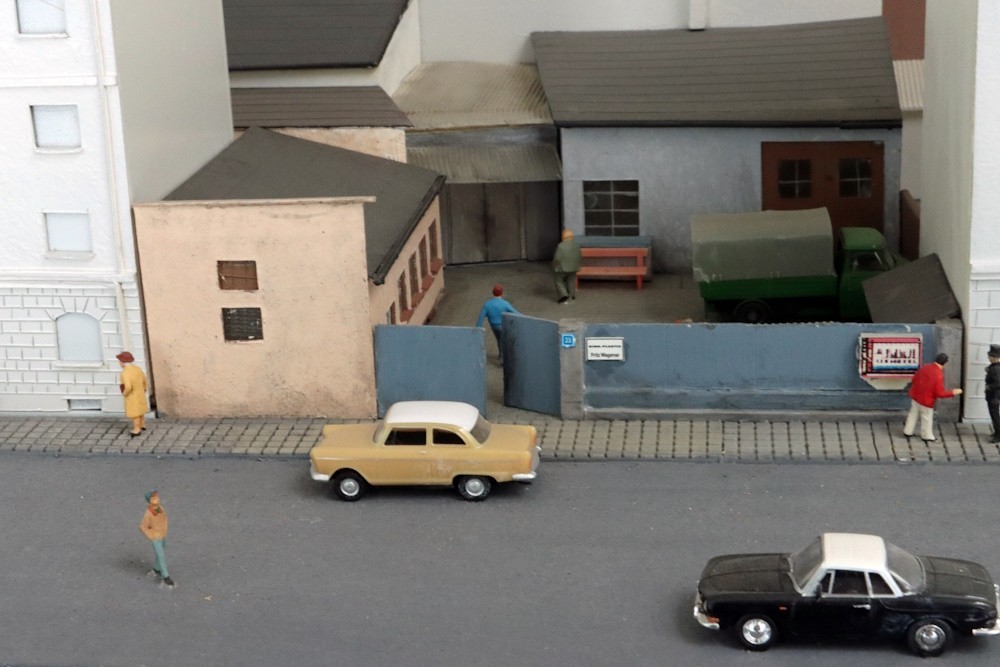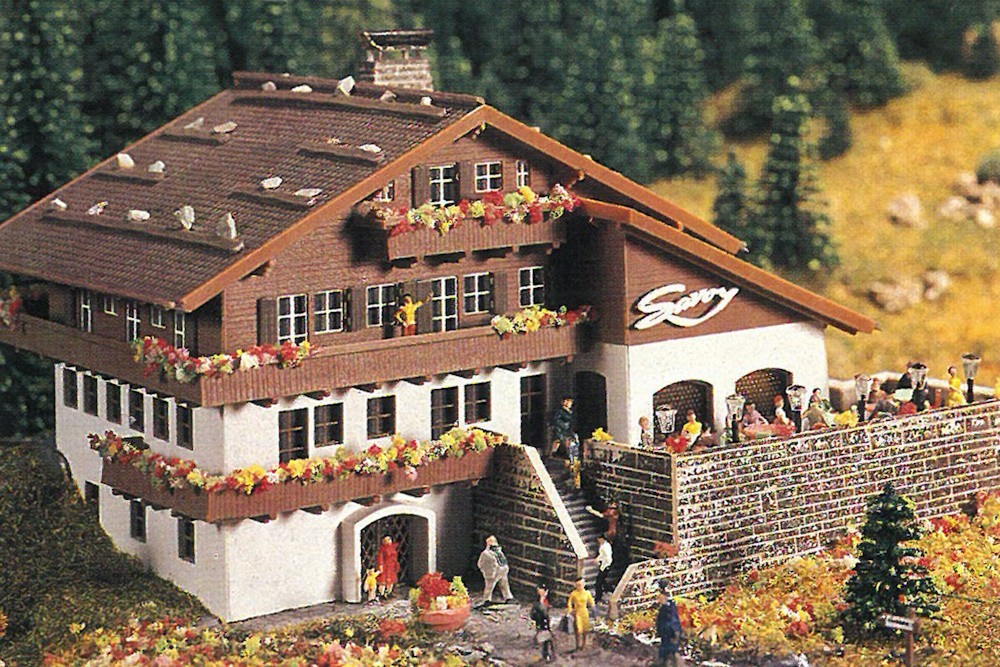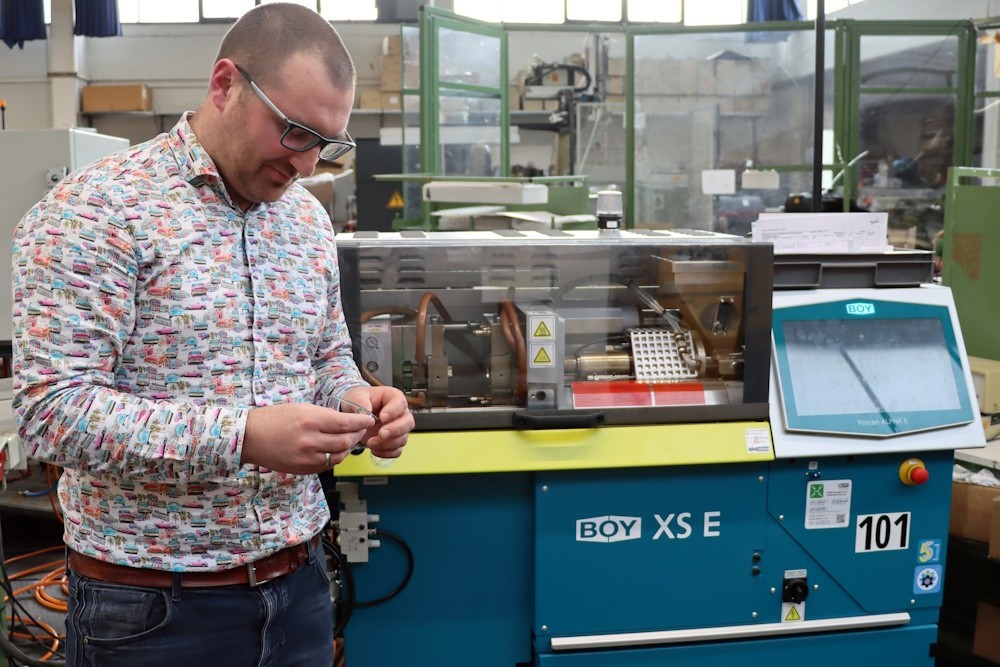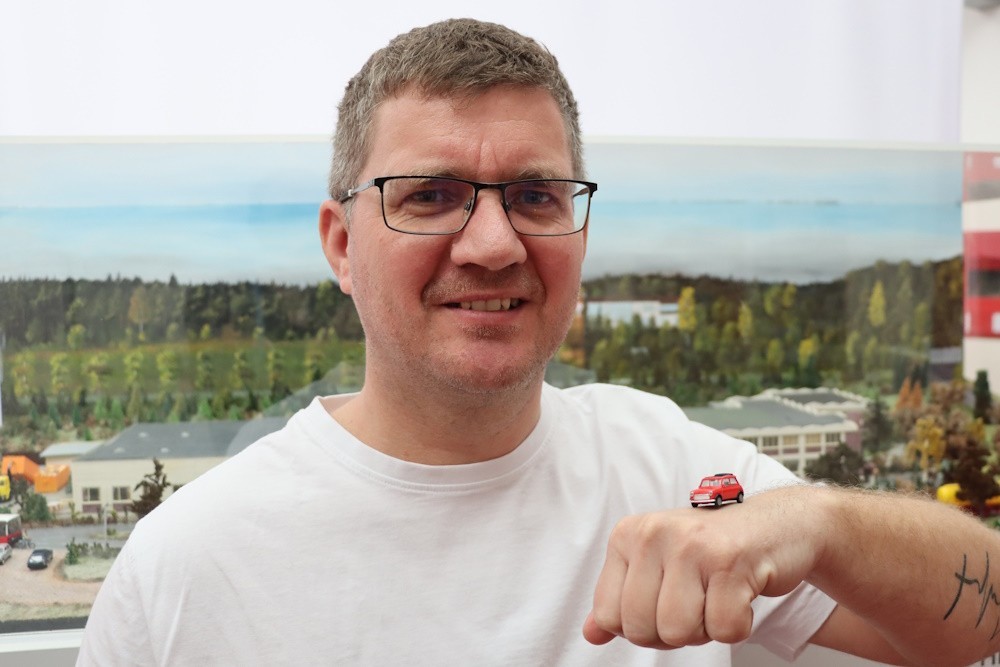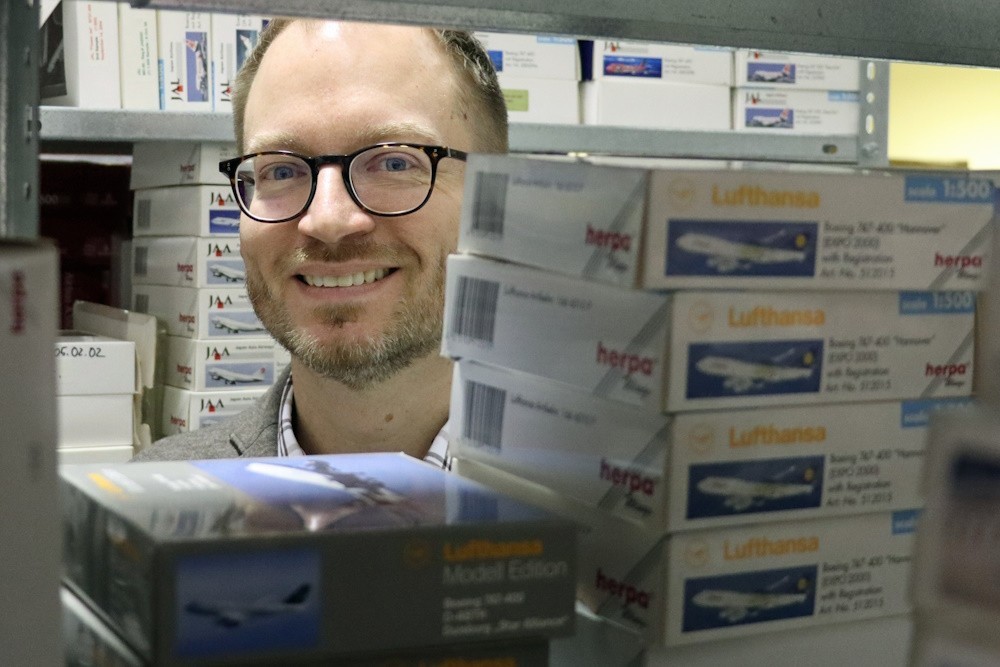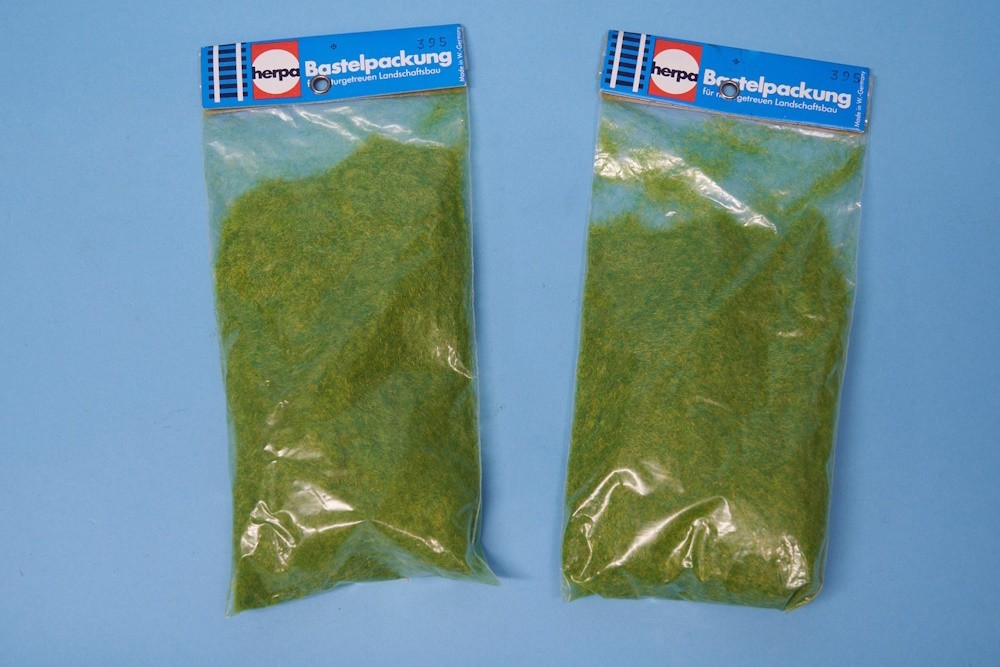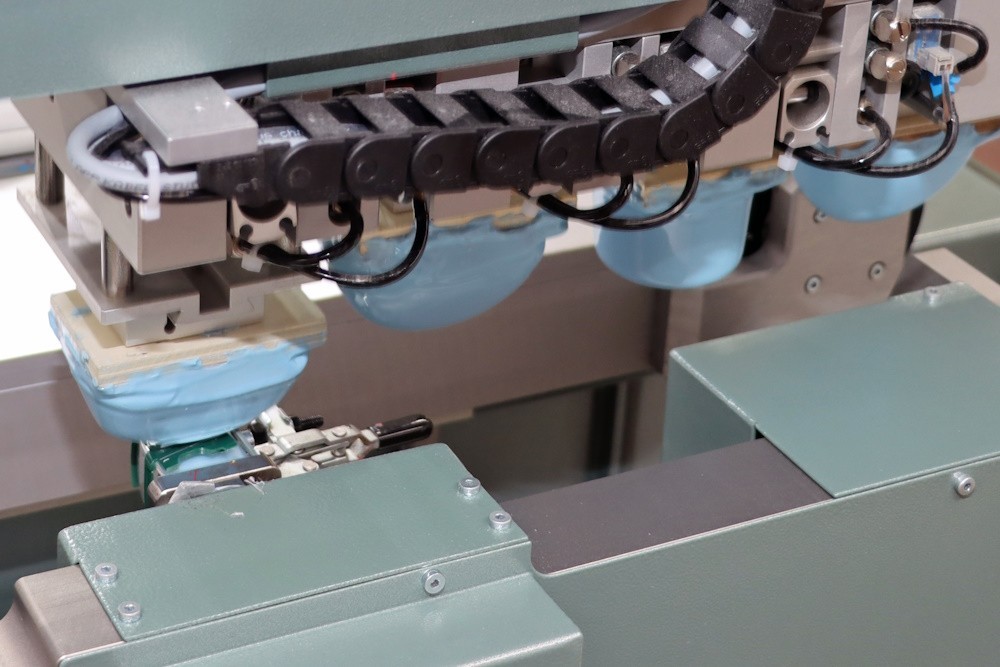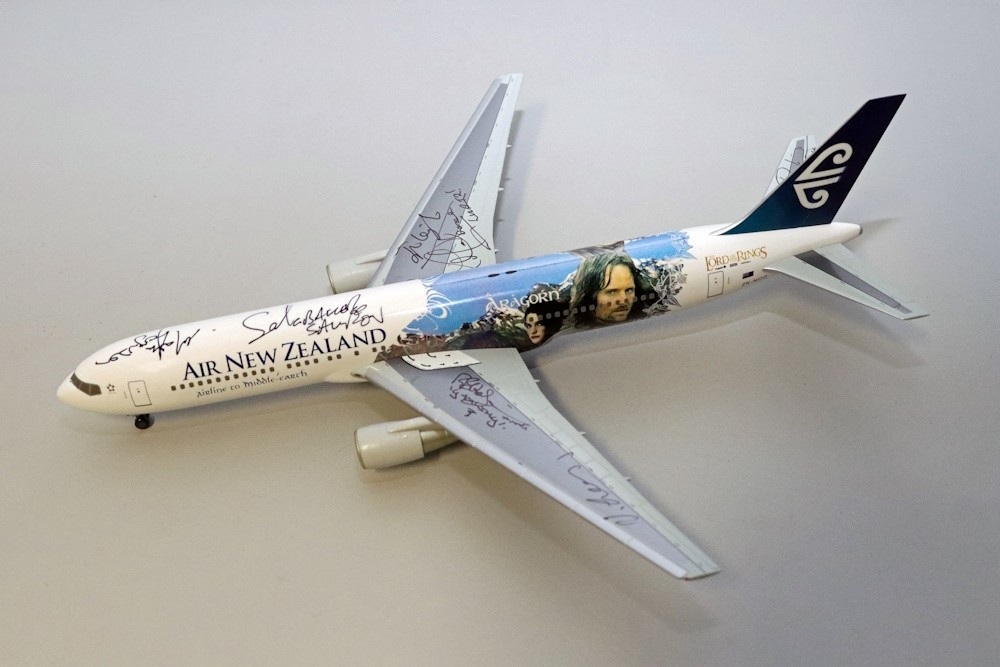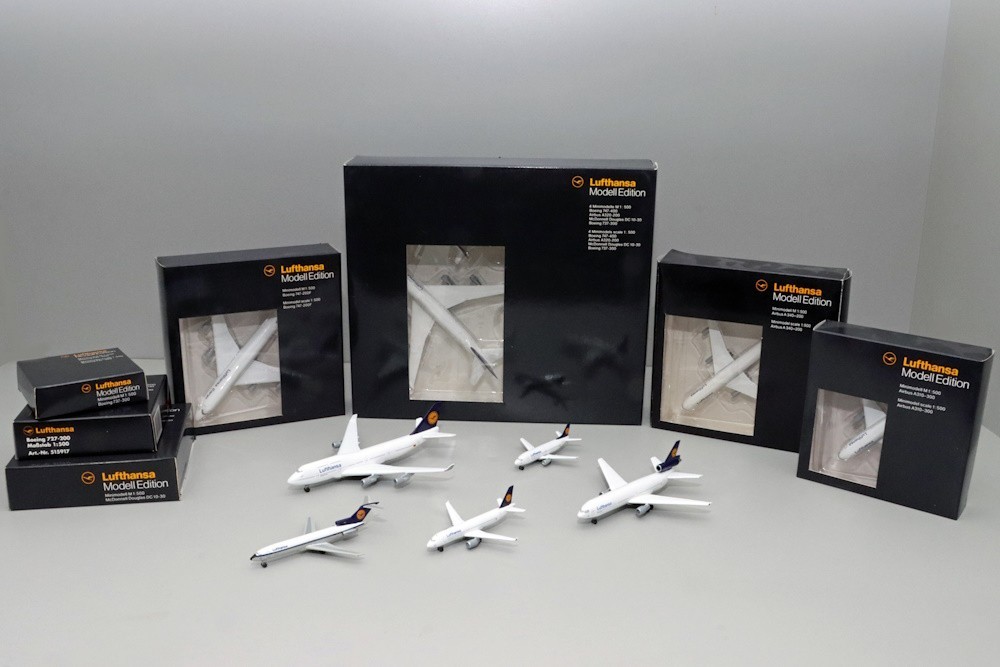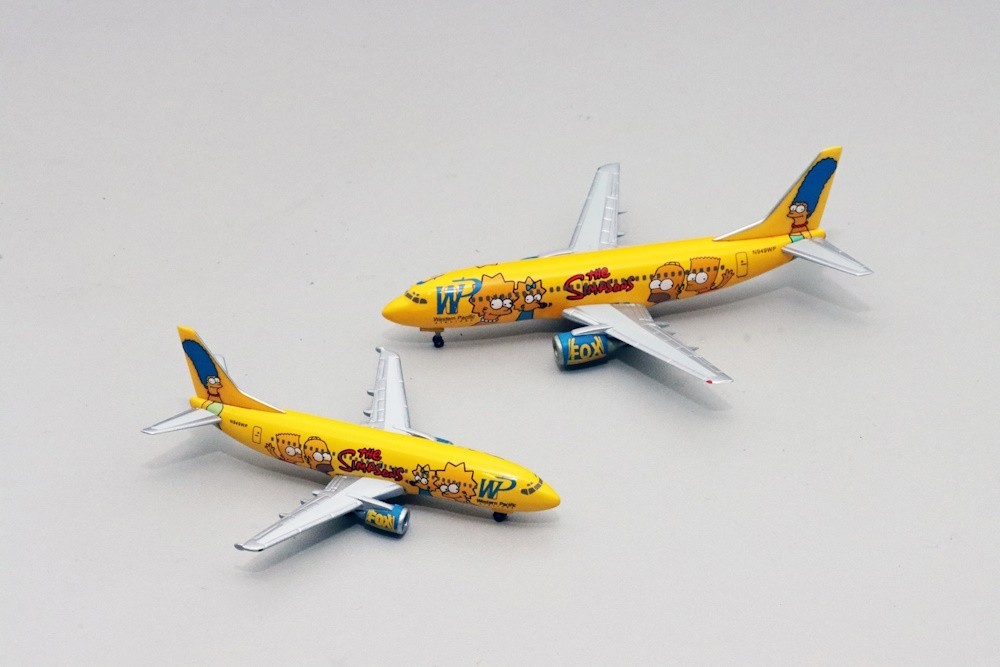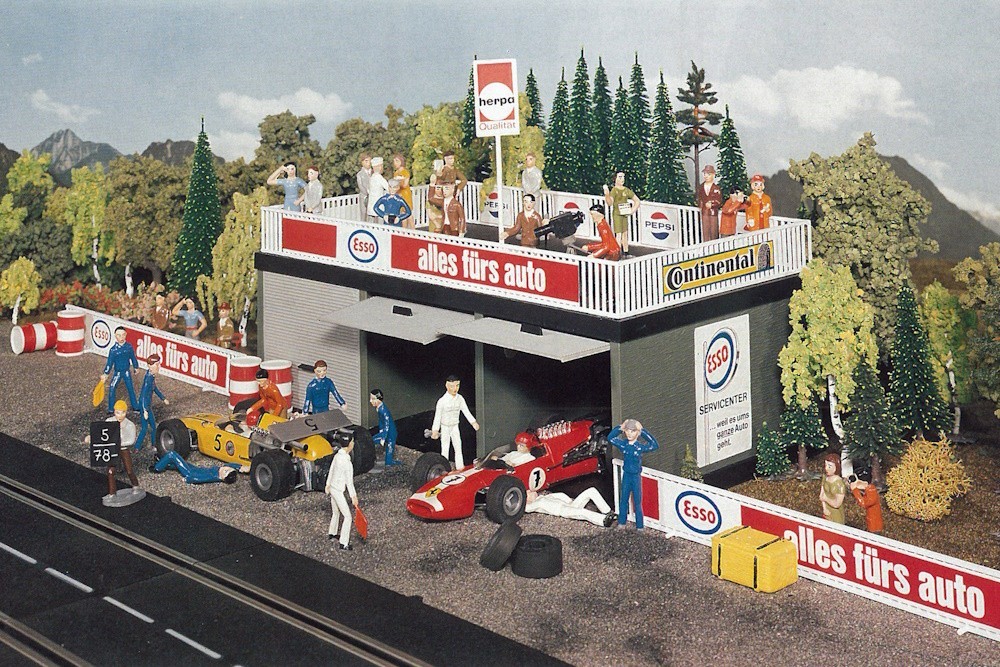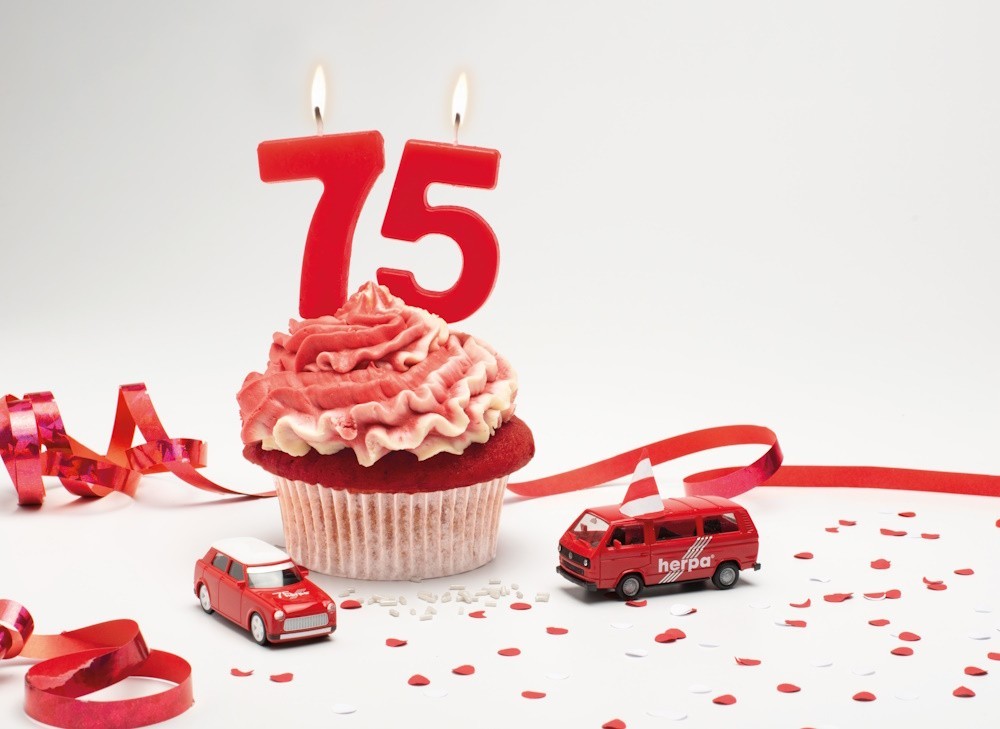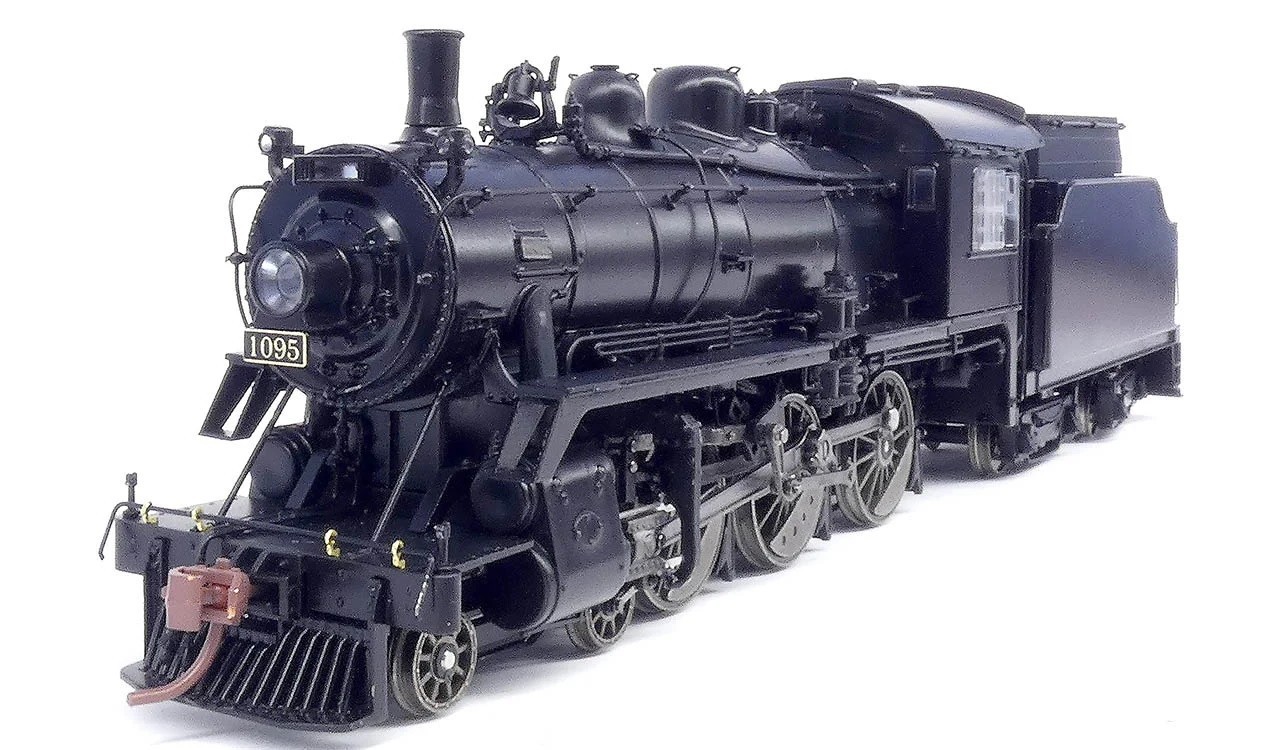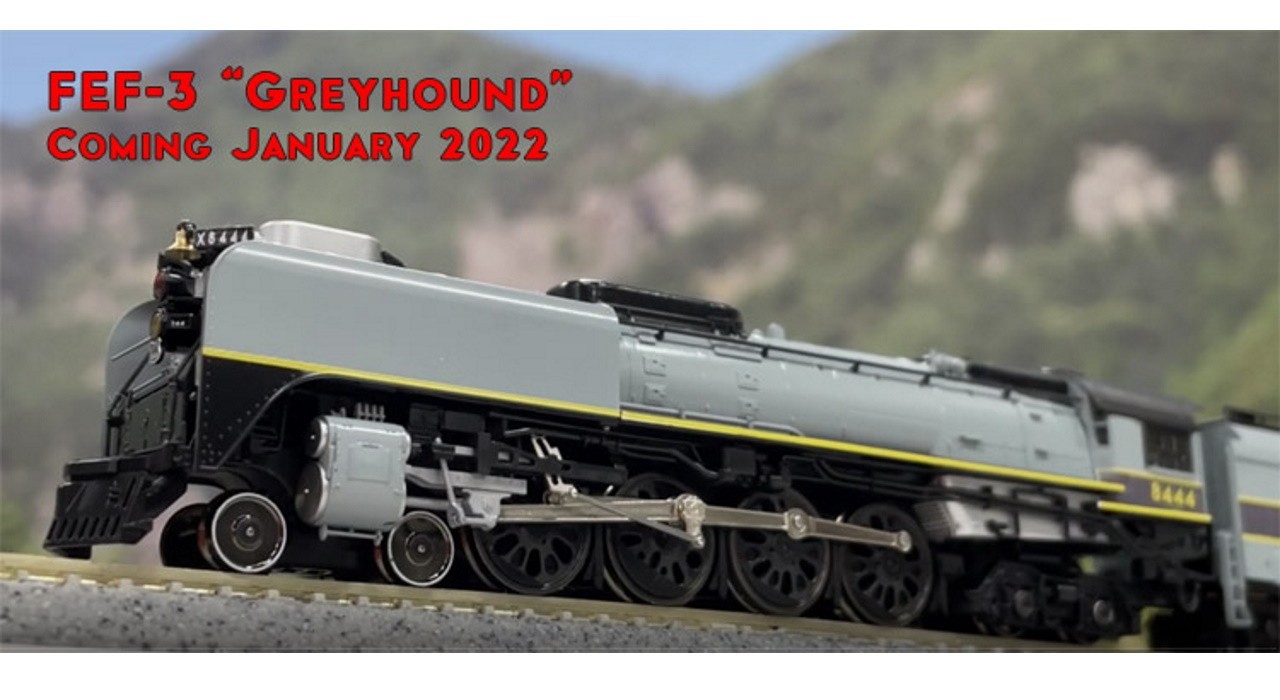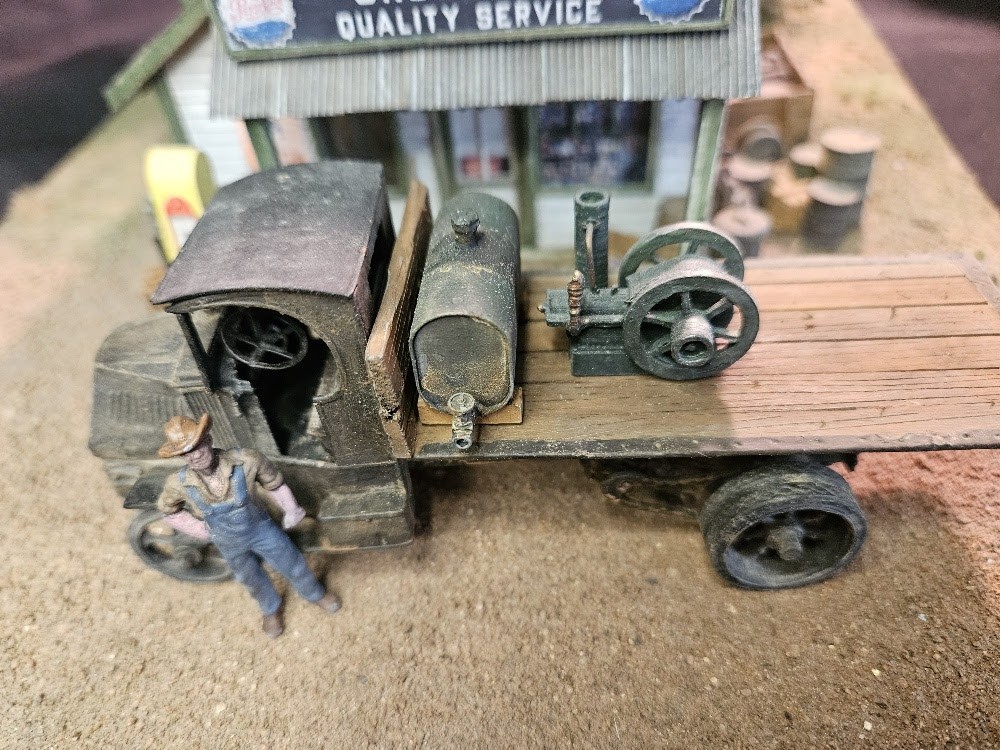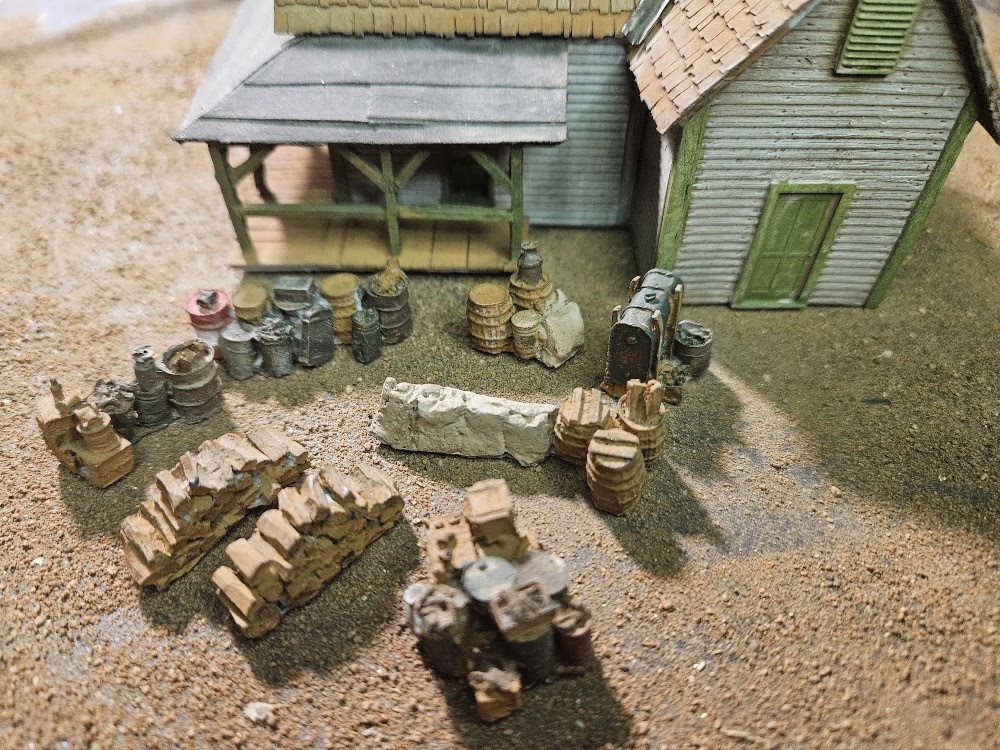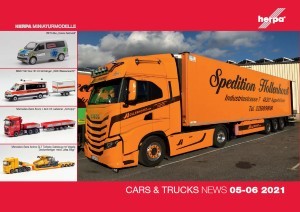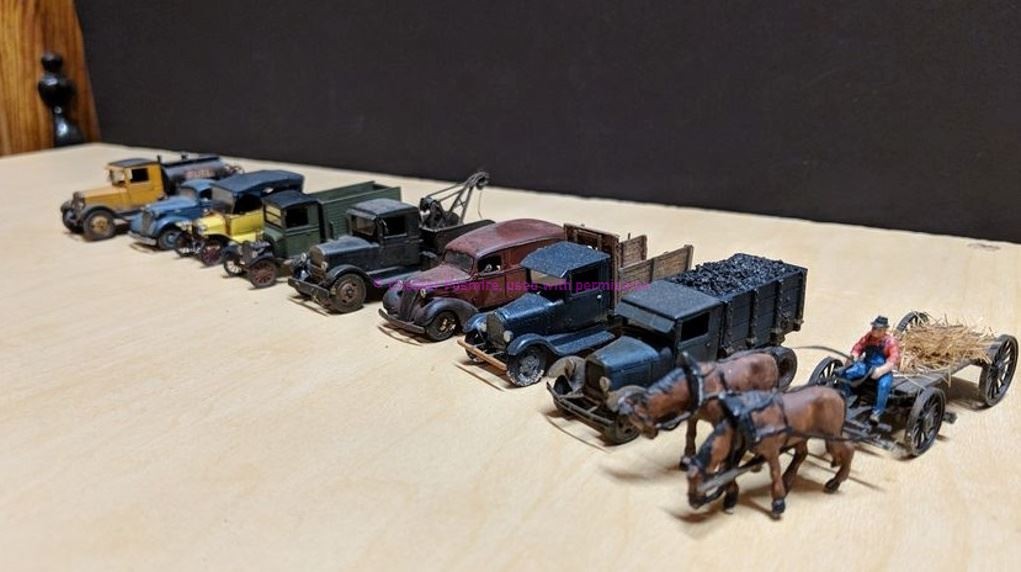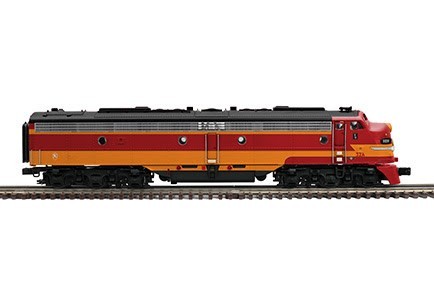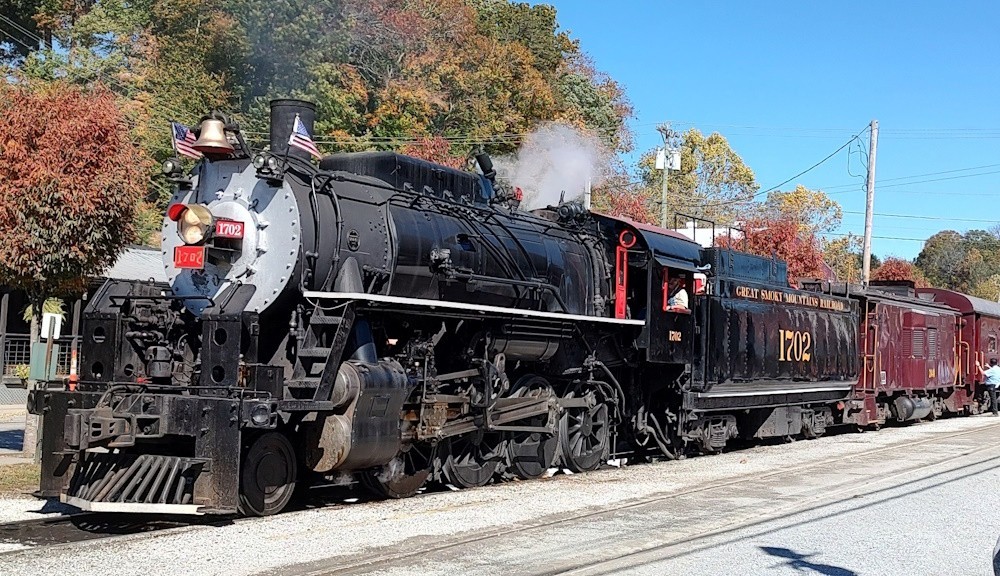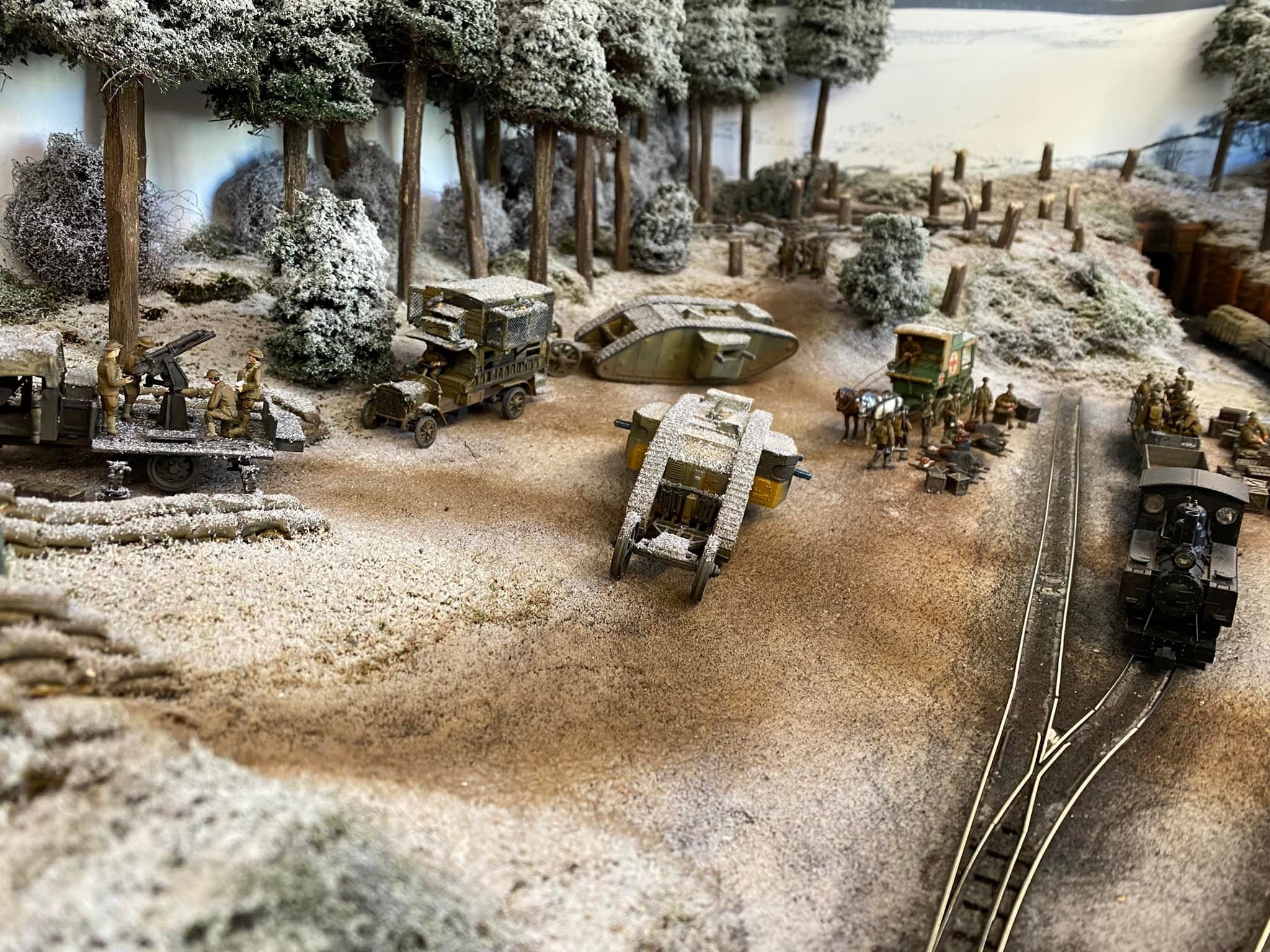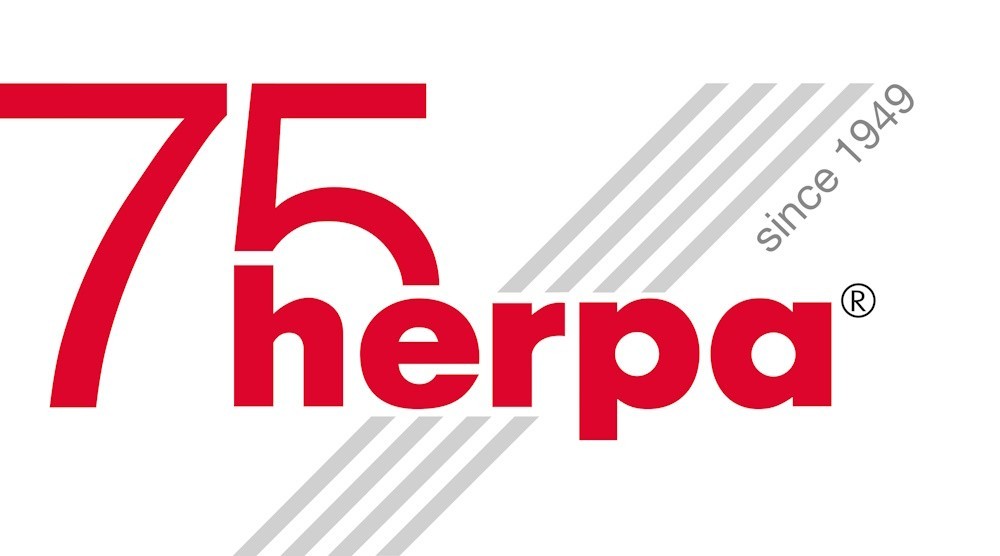
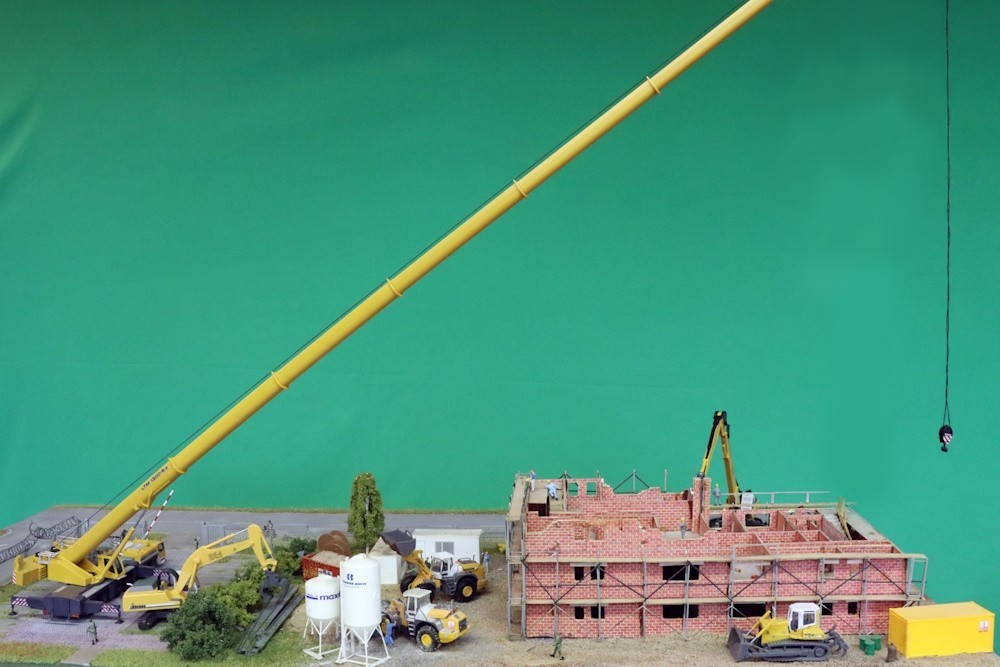
75 Years of Models for Modelers
This year Herpa is their diamond jubilee and they will celebrate 75 years with an open house on June 29, 2024. New and special models are planned.
Herpa is a model company for many modelers, with great cross-over potential. These model reviews are at home on more than one of the KitMaker Network sites. Whether you model railroads or automotive subjects, dioramas and layouts, vignettes or stand-alone displays, you can find something of interest. Civilian and military subjects, current and vintage, subjects of many nationalities are available. They offer buildings and loads to bring their models even more to life. They even make sets to animate some car and truck models.
Herpa makes ground vehicles and aircraft in several scales: 1/43; 1/87; 1/120; 1/160. Those are common model railroad scales. Ground vehicles are predominately scaled to 1/87, which is HO scale in model railroading. Occasionally, someone will comment in a review whether a subject is on the correct site, usually due to being 1/87. One eighty-seventh is ubiquitous world-wide, one can state that all HO is 1/87 but all 1/87 is not HO. It is a favored scale for auto and military modelers and collectors who have no interest in model trains. Obviously, it is a perfect scale for detailing one's HO - or O scale (1/43 in parts of Europe), TT (1/120) and N (1/160) - layout with automobiles.
Herpa also scales some aircraft subjects to model railroad scales 1/87 and 1/160, although most are scaled to aircraft collector scales.
I did not know Herpa once produced model railroad subjects, or scenery items - enjoy the photos of those.
Without further adieu, here is their press release and celebrator photos covering their history.
From wire trees to detailed vehicle models
Dietenhofen – It all began on March 9, 1949 with the founding of "Wilhelm Hergenröther - Fabrikation Nürnberger Qualitätsspielwaren". The company was first based in the war-ravaged city of Nuremberg. Model-making accessories were produced – but not yet car, truck or even airplane models, which today are responsible for the company's success and fame.
Wilhelm Hergenröther was an inventor with over 100 patents in a wide variety of fields. His new company was meant to merchandise these patents, even though not all of the ideas were commercially viable. The name Herpa was the shortened form of Hergenröther Patente, acronyms of this type being popular at the time. At the end of the 1940s, model-making accessories was a very small industry, but one that promised strong growth. Production was thus characterized by high-quality craftsmanship. Approximately 20 women possessed the right touch for the tricky business of assembly – according to the perspective of the times. During this period, Herpa produced scatter material, grass mats, miniature bushes, and trees to recreate landscapes in the small scale. Fir trees were twisted by machine from small wire brushes, although the subsequent conical cut to form a "tree" was still purely manual work and required some of the aforementioned feminine skills. They were then flocked. At peak times, up to 30,000 trees were produced per week.
In contrast, the production of the grass mats was already "high-tech", countless Perlon fibres under 30,000 volts being shot onto stiff paper in an electrostatic process. This ensured that the model turf stood up nicely rather than lying down flat. Meanwhile, around 60 tons of sawdust per year were used to produce gritting material in eight different shades. Herpa products soon attracted customers as far afield as Switzerland, Sweden, Italy, France, and Central America.
On March 15, 1961, engineer Fritz Wagener registered his RIWA company in Nuremberg. The company was actually supposed to be called FRIWA, an acronym made up of the first letters of his first name and surname, but there was already a company for hairdressing products thus listed.
Ever the pragmatist, Wagener simply crossed out the first letter. The company began with the production of plastic parts for the photographic industry in a former car repair shop. Right from the start, Wagener focused on high quality. "The photo industry's incoming inspections were very tough," he later recalled in his biography. Production increased continuously, but at some point, the neighbors felt disturbed by all the night-time work. Consequently, Fritz Wagener cast about for a new location and found the site he was looking for in Dietenhofen. Planning began on May 11, 1964, and the topping-out ceremony was held on July 12, 1965. For some time, Wagener had felt the dependence on one major customer - around 95 percent of the photo products were manufactured for the Braun company - was too risky. He needed another mainstay in the field of plastic injection molding technology. In 1964, he took over Herpa and expanded its product range.
From 1967, Herpa was the first company to produce accessories for electric car racing tracks, such as spectator grandstands, racing boxes, barrier fences, figures, and a timekeeper's tower. One year later, building kits for model railroads in the 1:160 scale (N-gauge) were added. These were already so detailed that Herpa quickly made a good name for itself in the industry.
The first model vehicles
In the 1970s, there were almost no model vehicles in the special1:87 scale for model railroads, so the idea of offering high-quality models for model railroads was born in 1976. Just two years later, the first five car models were presented at the Nuremberg Toy Fair and were a great success, and in 1980 the first three truck models appeared. Two new departments were created at Herpa: Construction and Mold Making. Herpa constructs models and its own molds - the costs for a truck model today easily reach the six-figure mark. After the first five models, they were designed in such a way that they did not have to be ultrasonically welded, but instead were plugged in. This was cheaper to produce. This meant that model builders could simply take them apart to repaint them.
Initially, wooden models were created in 1:10 scale, from which the molds for the 1:87 scale models could be derived. As of 1988, Herpa usually received the original data from the vehicle industry, and since then the models have been produced in ever greater detail using CAD technology. While the first trucks still had around 15 parts, today they consist of over 40. Herpa has set standards in many respects: It brought out the first metallic-paint models, the vehicles being elaborately printed (not glued), the radiator grille and other chrome parts also chrome-plated and, thanks to a clever design of the molds with different inserts, different variants of individual vehicles could be realized economically as models. In the original, there are always easily 14 variants - more for prime movers. Herpa does not realize all of them, but significantly more than its competitors.
Together with airbrush artists, Herpa also realized original show trucks, of which there are of course also models. Many haulage companies have models sourced from their vehicle fleets. By the way, the best-selling car model is the Citroen 2CV with well over a 1⁄2 million units in the most diverse variants. Today, Herpa models can still be found on model railroad layouts, but they are above all popular collector's items.
Diversifying with aircraft
Lufthansa fired the starting gun for the new Wings division in 1988. Aviation-enthusiast and manag ng director of the time, Claus Wagener, had been toying with the idea of expanding the product range to include aircraft models for some time. He presented Lufthansa with four plastic models in the 1:500 scale, which, in contrast to the competitor's models on a scale of 1:600, were printed and not pasted over with decals. Lufthansa was convinced there was a quality advantage and commissioned Herpa with the production of an exclusive edition of models from its fleet in the 1:200 scale. The detailed printed models with moving parts such as landing gear and engine blades were a revolution in the model industry. Inspired by the positive response, Claus Wagener continued to develop his idea of a 1:500 scale model edition. "We soon realized that the market demanded weighty metal models, so we quickly switched to die-cast zinc," Wagener recalls. Now that retailers were also interested in these models, Herpa was able to produce larger quantities than the competition. As zinc die-casting requires a lot of manual work, these models were produced in the Far East to remain affordable. In 1992, the models were presented for the first time at the Nuremberg Toy Fair. Subsequently, many airlines commissioned Herpa to produce models from their fleets. The initial concern that the range of interesting airplanes as a basis for attractive models would soon be exhausted proved to be unfounded. From the mid-1990s onwards, there was a real trend among airlines towards colorful special liveries, which repeatedly provided highly-sought models.
By far the best-selling aircraft model has been the Lufthansa A380 in the 1:500 scale. No fewer than 94,000 units have been sold in various editions - many of them in Lufthansa on-board sales or the Miles&More program. The best-selling commercial model has been the Western Pacific Boeing 737-300 with the Simpsons livery. 33,758 models were sold worldwide. The usual print runs are between 500 and 3,000 copies. Meanwhile, other model highlights include the legendary "Rizzi Bird" and the Air New Zealand models featuring images from "The Lord of the Rings" film trilogy, with over 100 prints each! In 30 years of Herpa Wings, more than 4,000 aircraft models in various scales from over 650 airlines and far more than 100 different aircraft types have been released. The company spends a six-figure sum on licenses every year - in the Wings division alone.
Asserting itself in challenging times
In the 1990s, the model market boomed to such an extent that there were even counterfeit Herpa models on the market. Business orders have always been a mainstay, with many car brand commissioning and selling up to 150,000 models of their vehicles. For a long time, the only way way up. Today, however, most car brands have abandoned the H0 scale completely, although some still purchase a few hundred models. At the same time, the passion for collecting has also waned.
Producing smaller quantities, it has become much more difficult to offer affordable models. In addition, license fees and increasing bureaucracy are causing costs to rise even further. With the so-called "Märklin crisis" of 2000, the model vehicle market also collapsed. Herpa got into difficulties but got a lifeline from the House of Leiningen, originating from Odenwald. While other model companies disappeared from the market during these years, Herpa was able to maintain its market leadership, but at a lower level of turnover. Processes were optimized and the product range was streamlined as much as possible. The current Managing Director, Prince Hermann zu Leiningen, continues to invest in new machines and his focus is on the efficient use of energy. New, digital offerings are intended to appeal to young people without alienating classic collectors. In the anniversary year, there will now be many special models and the open day on June 29, 2024 will be dedicated whole-heartedly to our 75th anniversary.
